AGU 2024: NASA Science on Display in the Nation’s Capital
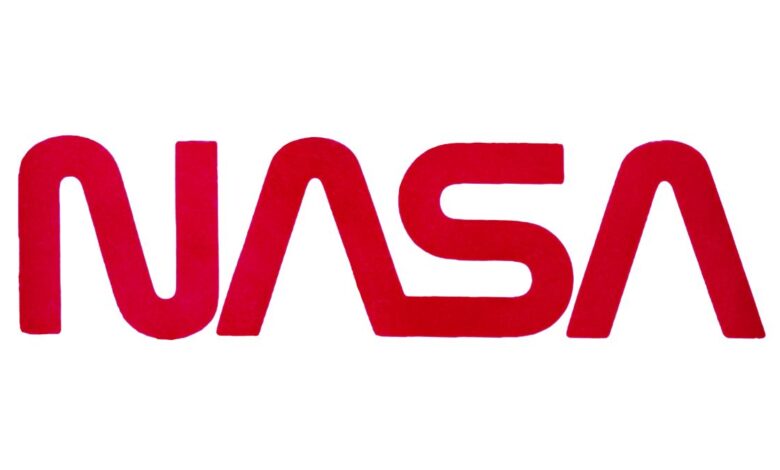
Introduction
The American Geophysical Union (AGU) returned to the nation’s capital in 2024, hosting its annual meeting at the Walter E. Washington Convention Center in Washington, DC from December 9–14, 2024. NASA Science upheld its long-standing tradition as an AGU partner and exhibitor, leveraging the meeting as an opportunity to share NASA’s cutting-edge research, data, and technology with the largest collection of Earth and planetary science professionals in the world. Many of the estimated 25,000 students, scientists, and industry personnel who attended the conference visited the NASA Science exhibit, interacting with NASA subject matter experts as detailed in the essay that follows – see Photo 1. Visitors also watched live Hyperwall presentations and collected NASA Science outreach materials, such as the 2025 NASA Science Planning Guide.

Photo 1. Paulo Younse [NASA/Jet Propulsion Laboratory (JPL), Robotics Systems Group—Engineer,] poses with a model of the sample tube he designed for the caching architecture that was used on NASA’s Mars Sample Return mission.
Photo credit: NASA
Highlights from the NASA Science Exhibit
NASA Hyperwall Stories
The NASA Hyperwall has been a focal point of the agency’s outreach efforts for over two decades, serving as both a powerful storytelling platform and the primary vehicle through which the public engages with the award-winning visualizations published by NASA’s Scientific Visualization Studio (SVS) – see Photo 2. Forty-nine NASA mission scientists and program representatives shared NASA science with the public from the Hyperwall stage during AGU24. NASA leadership shared mission news and outlined upcoming research across all five of the NASA Science divisions: Earth science, planetary science, heliophysics, astrophysics, and biological and physical sciences – see Photos 3–8. A catalog of NASA project scientists and mission representatives, who provided colorful overviews of everything from NASA’s Mars Sample Return to the Parker Solar Probe’s historic flyby of the Sun, delivered additional presentations.

Photo 2. Mark Subbarao [NASA GSFC—Director of NASA’s Scientific Visualization Studio] highlighted key visualizations produced by NASA’s Scientific Visualization Studio during 2024 and presented them as a countdown of the top 10 visualizations of the year.
Photo credit: NASA
The complete AGU24 Hyperwall schedule is available at this link. Readers can view YouTube videos of the presentations via links over the individual names in the photo captions below.
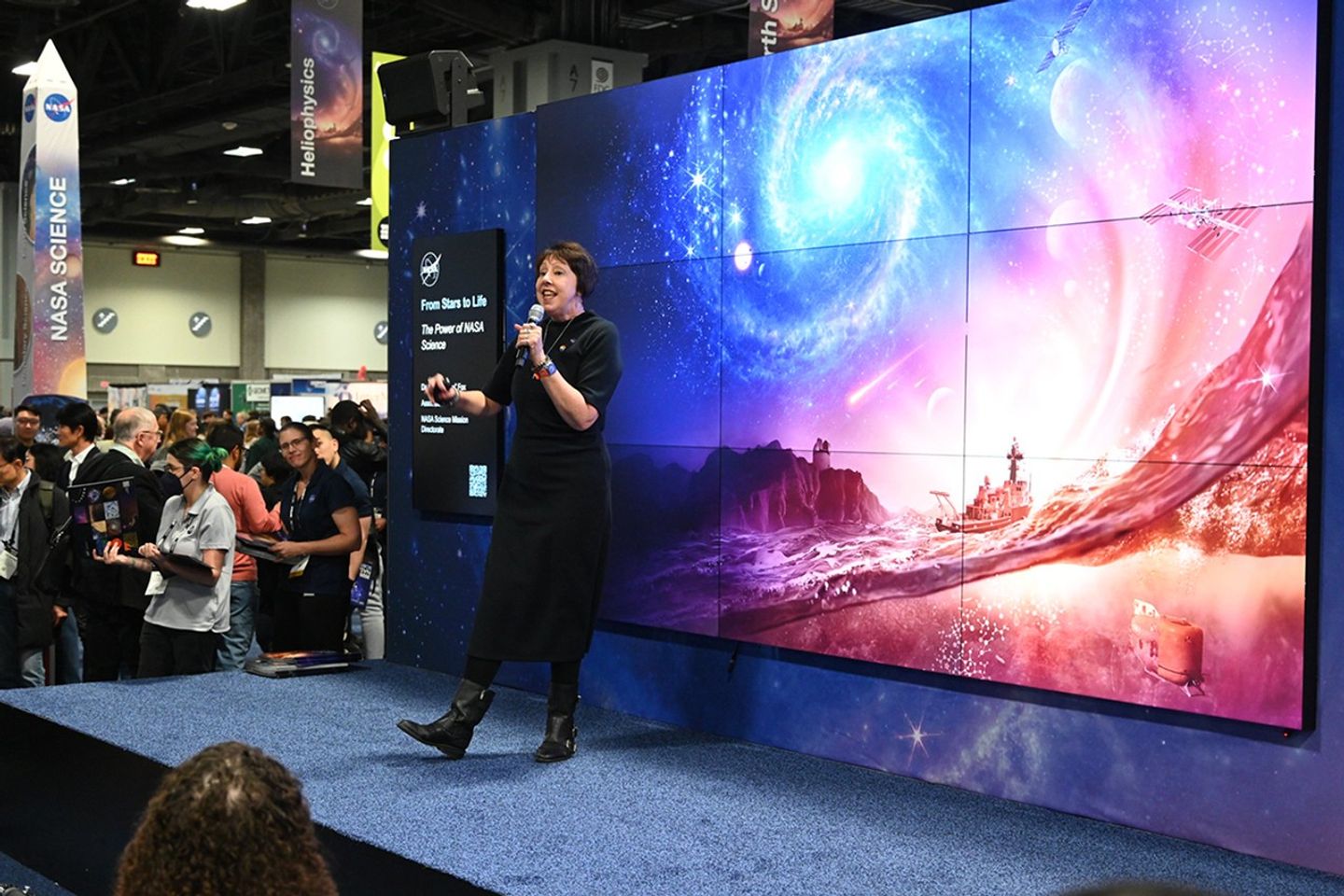
Photo 3. Nicola Fox [NASA HQ—Associate Administrator of Science Mission Directorate] kicked off the week’s Hyperwall storytelling series by sharing 12 images selected for the 2025 NASA Science Planning Guide. Each image underscores the beauty of the natural world and the inherent value of scientific endeavors undertaken not only at NASA but by citizens around the globe.
Photo credit: NASA
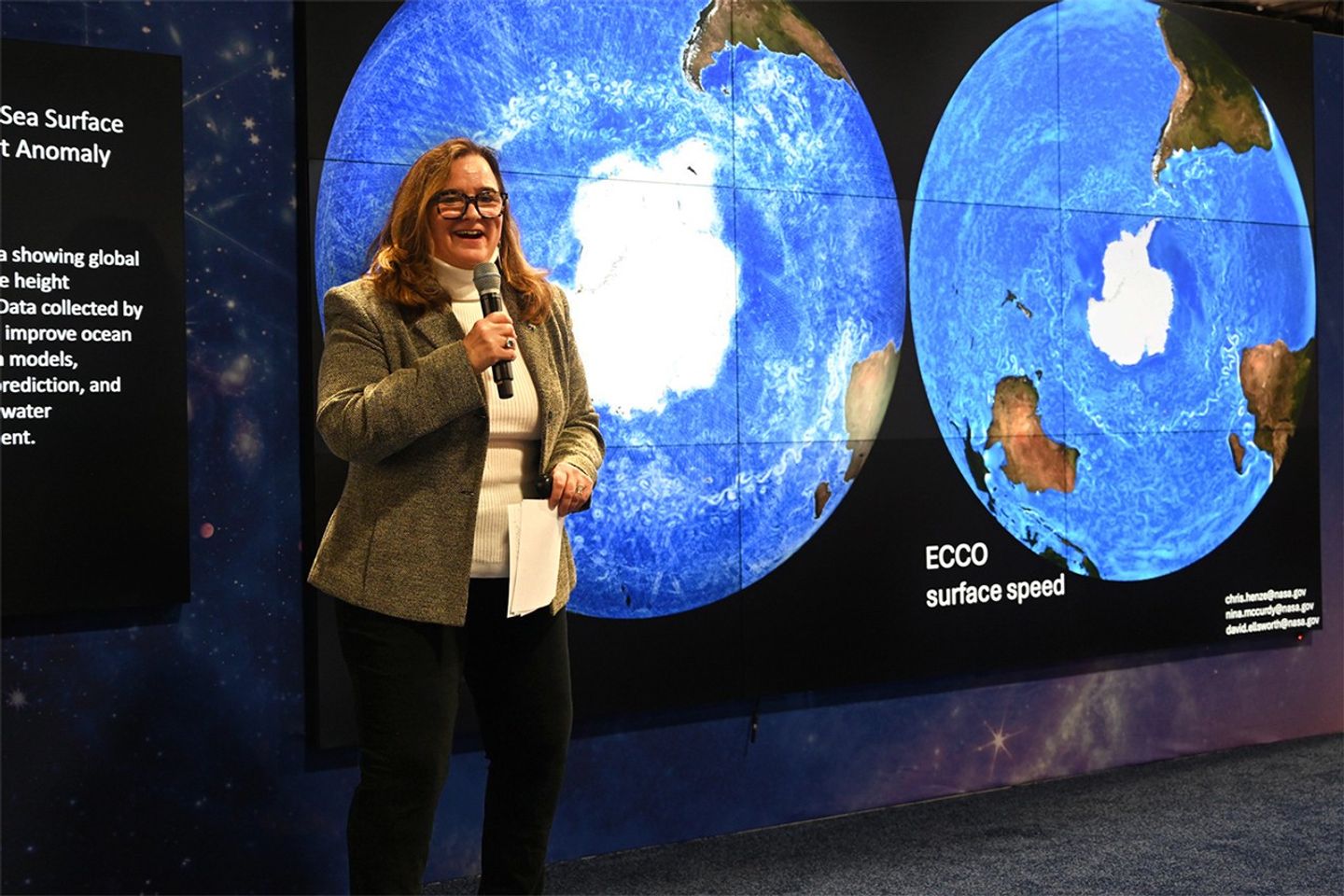
Photo 4. Karen St. Germain [NASA HQ—Director of the Earth Science Division] provided audience members with an overview of NASA’s Earth Science Division – including the latest science from the Plankton, Aerosol, Cloud, and Ecosystems (PACE) mission.
Photo credit: NASA
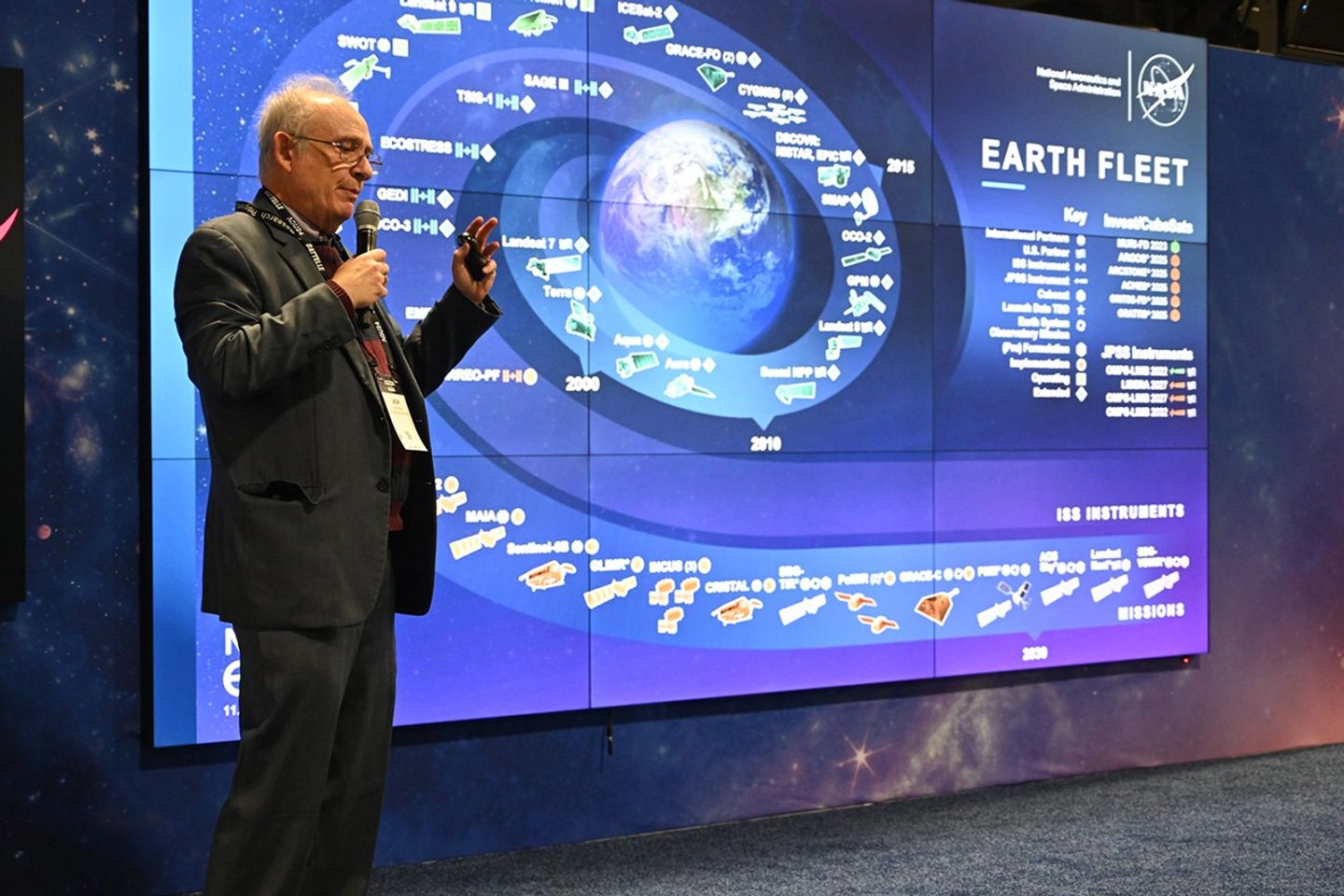
Photo 5. Jack Kaye [NASA HQ—Director of the Airborne Science Program] highlighted key airborne science missions that flew in 2024 and demonstrated the broad list of airborne satellites and instruments and how their applications enable the advancement of Earth science research around the globe.
Photo credit: NASA
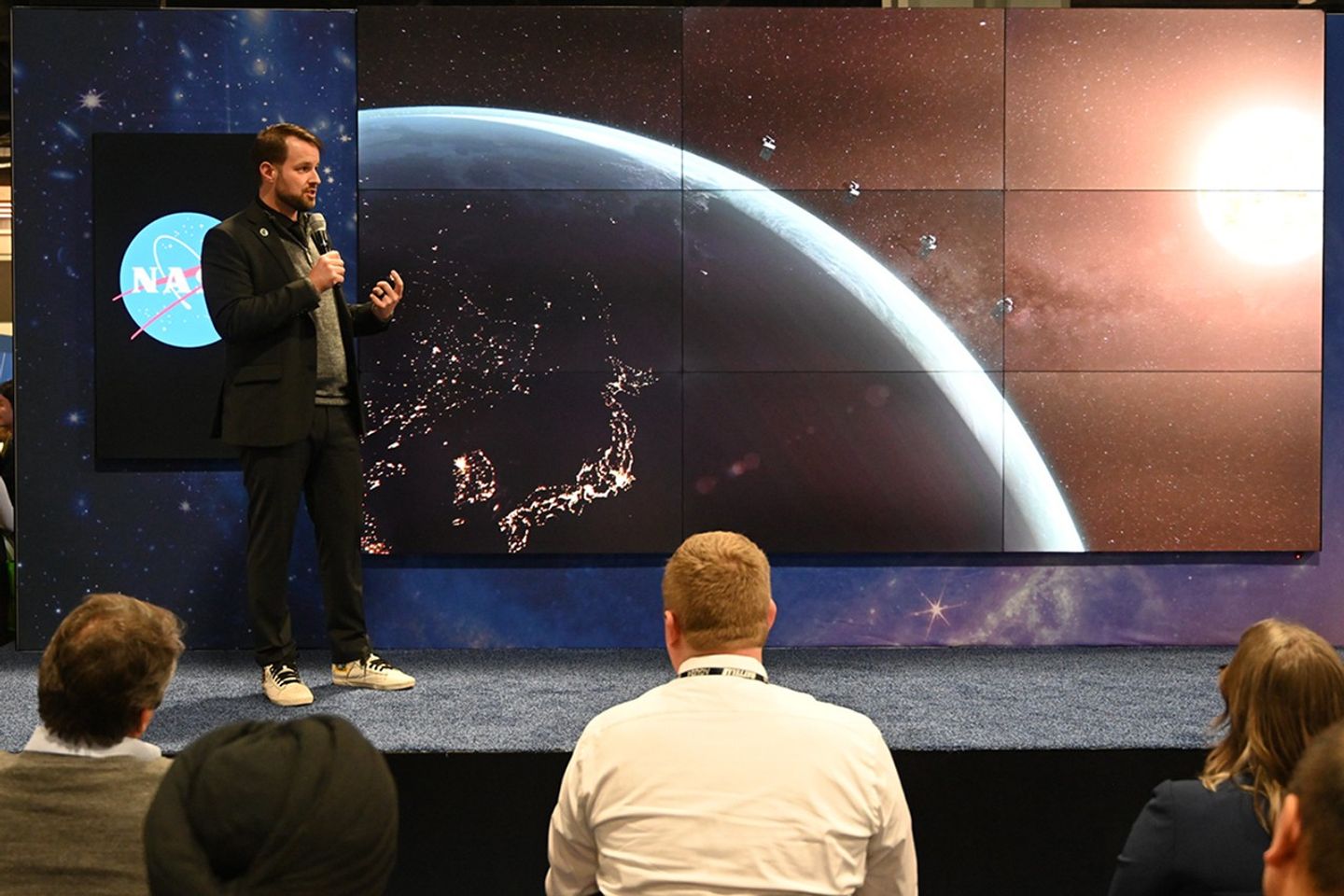
Photo 6. Joseph Westlake [NASA HQ—Director of the Heliophysics Division] delivered a talk in front of the NASA Hyperwall that captured the groundbreaking research that NASA has planned for the culmination of the Heliophysics Big Year, including mission news related to the Parker Solar Probe, Interstellar Mapping and Acceleration Probe (IMAP), and Tandem Reconnection and Cusp Electrodynamics Reconnaissance Satellites (TRACERS).
Photo credit: NASA
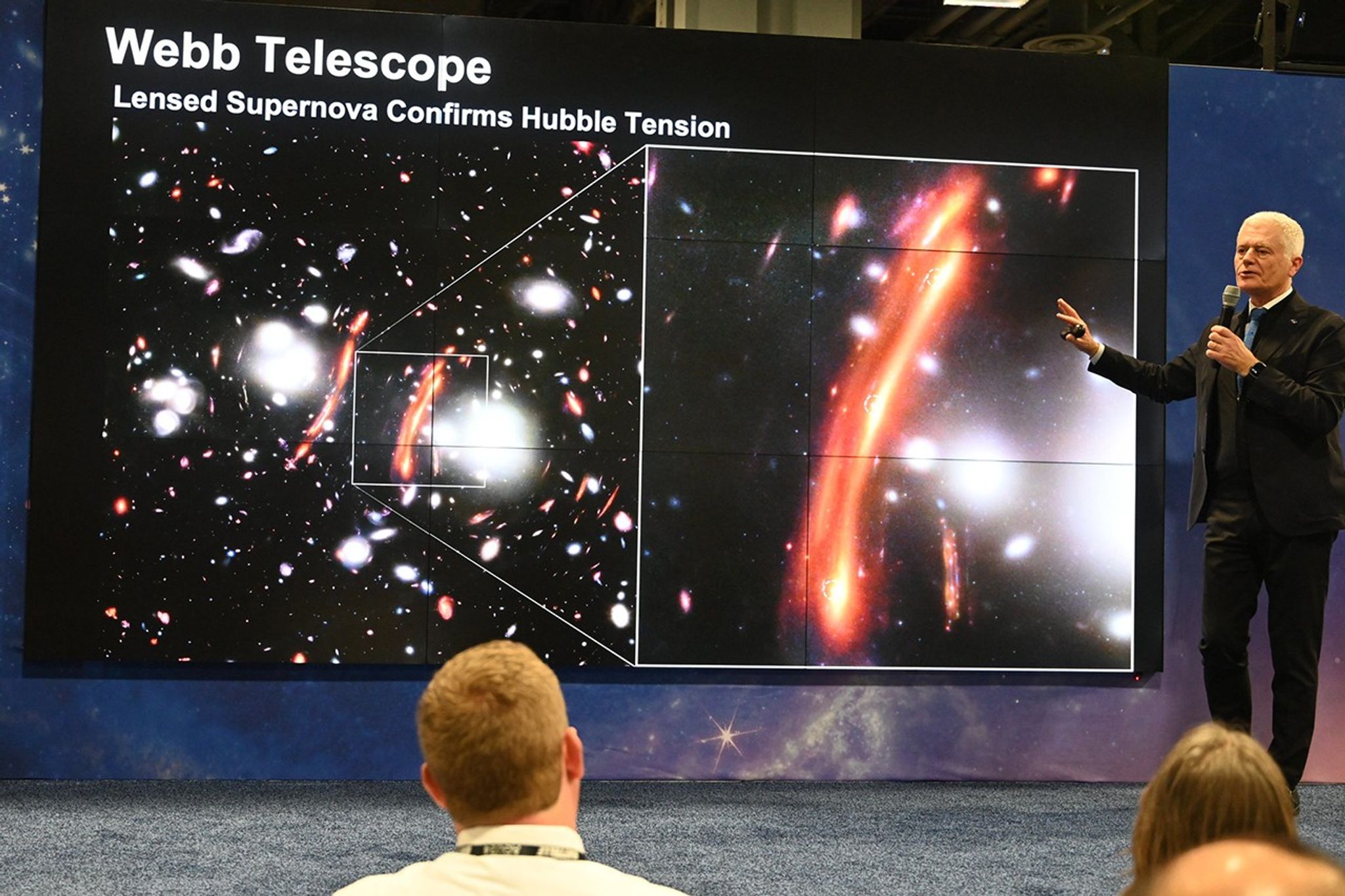
Photo 7. Mark Clampin [NASA HQ—Director of the Astrophysics Division] gave AGU attendees a glimpse of NASA missions that will help researchers around the globe observe distant worlds and answer profound questions about the physics of the universe beyond our solar system. His presentation centered around the impact of the upcoming Nancy Grace Roman Telescope and Habitable Worlds Observatory (HWO).
Photo credit: NASA
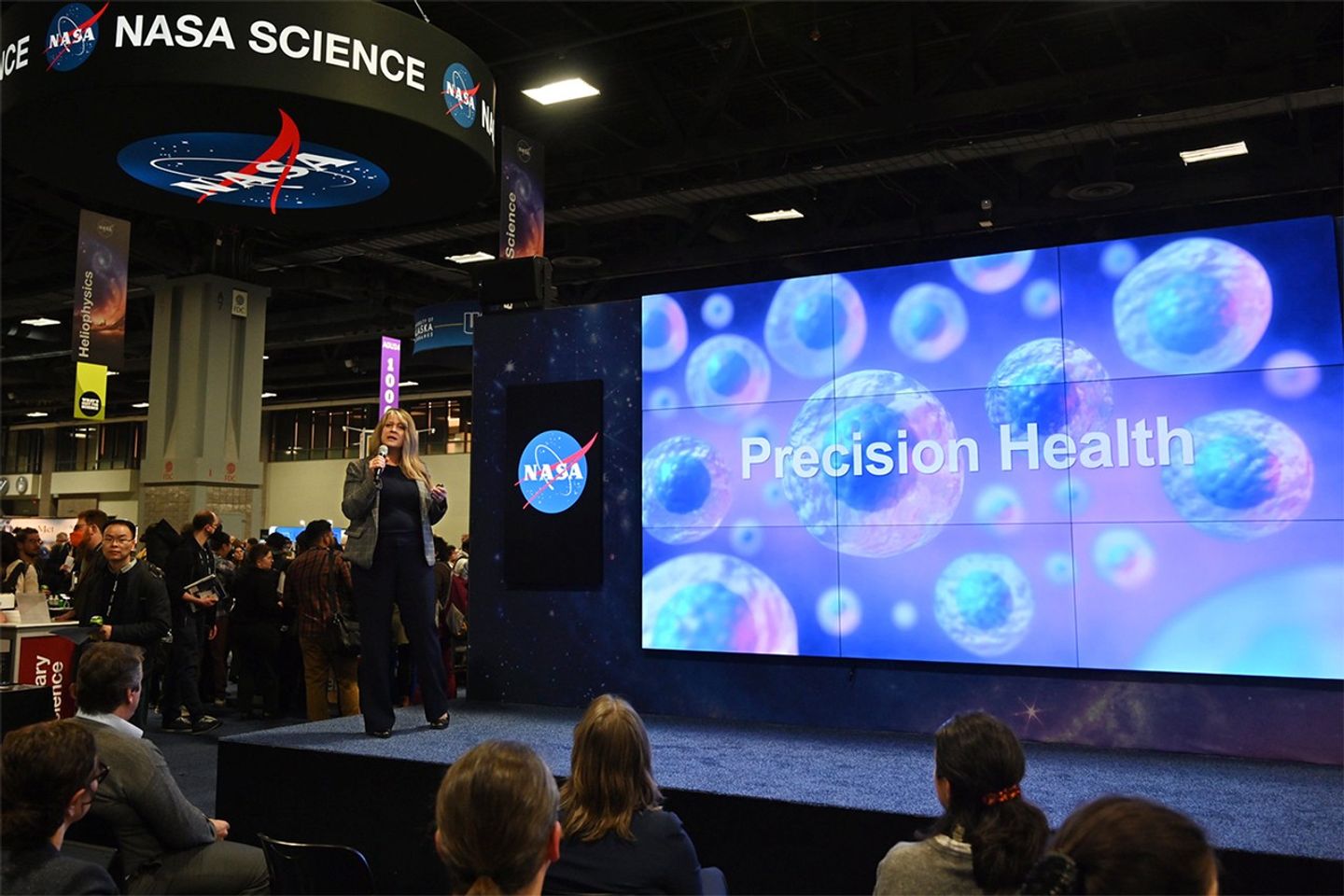
Photo 8. Lisa Carnell [NASA HQ—Director of the Biological Sciences Division], who sits at the helm of NASA’s newest scientific division, gave an overview of the current and future NASA research that is enhancing our understanding of how humans can live and work in space.
Photo credit: NASA
During AGU, NASA also celebrated the winners of the 2024 AGU Michael Freilich Student Visualization Competition, an annual competition honoring former NASA Earth Science Division director Michael Freilich that inspires students to develop creative strategies for effectively communicating complex scientific problems – see Photo 9. See the summary of “Symposium on Earth Science and Applications from Space…” [The Earth Observer, Mar–Apr 2020, Volume 32 Issue 3, 4–18] to learn more about Freilich’s career at NASA and impact on Earth science. A list of the award’s past recipients, dating back to the 2016, is published on AGU’s website.







Face-to-face With NASA Experts
AGU opened its exhibit hall to the public at 10:00 AM on December 9. Thousands of eager attendees poured into the space to engage with exhibit staff, representing a variety of universities, research institutions, and private organizations from around the world.

Photo 10. AGU attendees explore the NASA Science exhibit space shortly after the exhibit hall opened on December 9.
Photo credit: NASA





NASA Science welcomed AGU attendees, who gathered within the perimeter of the exhibit shortly after opening – see Photo 10 – where NASA staff distributed the 2025 NASA Science Planning Guide – see Photo 11.
Attendees filtered through the NASA Science booth by the thousands, where more than 130 outreach specialists and subject matter experts from across the agency were available to share mission-specific science and interface directly with members of the public – see Photos 12–15.

Photo 12. The NASA Science booth included a collection of exhibit tables, where mission scientists and outreach specialists shared information and materials specific to various NASA missions and programs.
Photo credit: NASA
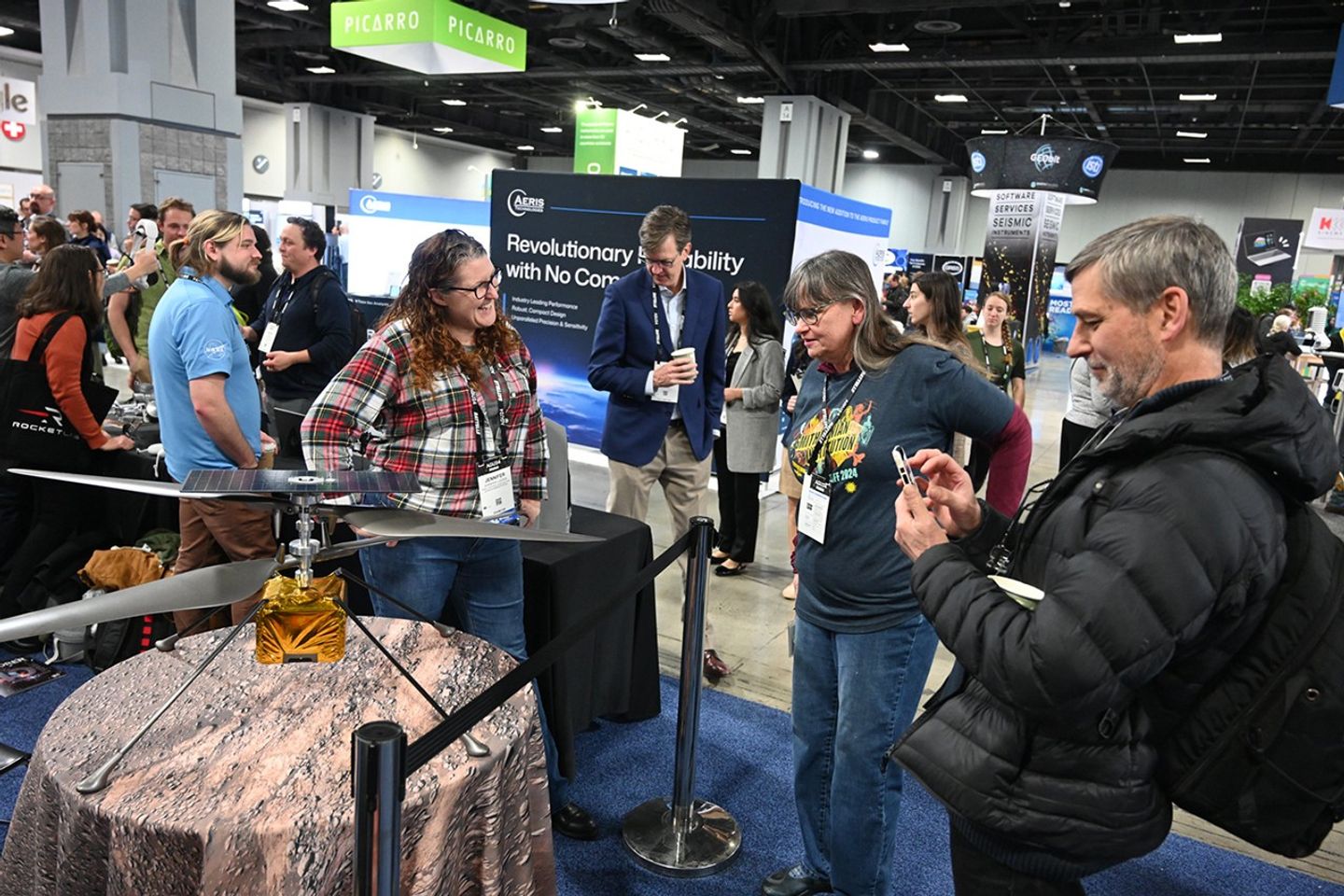
Photo 13. Outreach specialists from NASA’s Dragonfly mission, which plans to send a robotic aircraft to the surface of Saturn’s moon Titan, speak with attendees in front of a to-scale model of the aircraft.
Photo credit: NASA
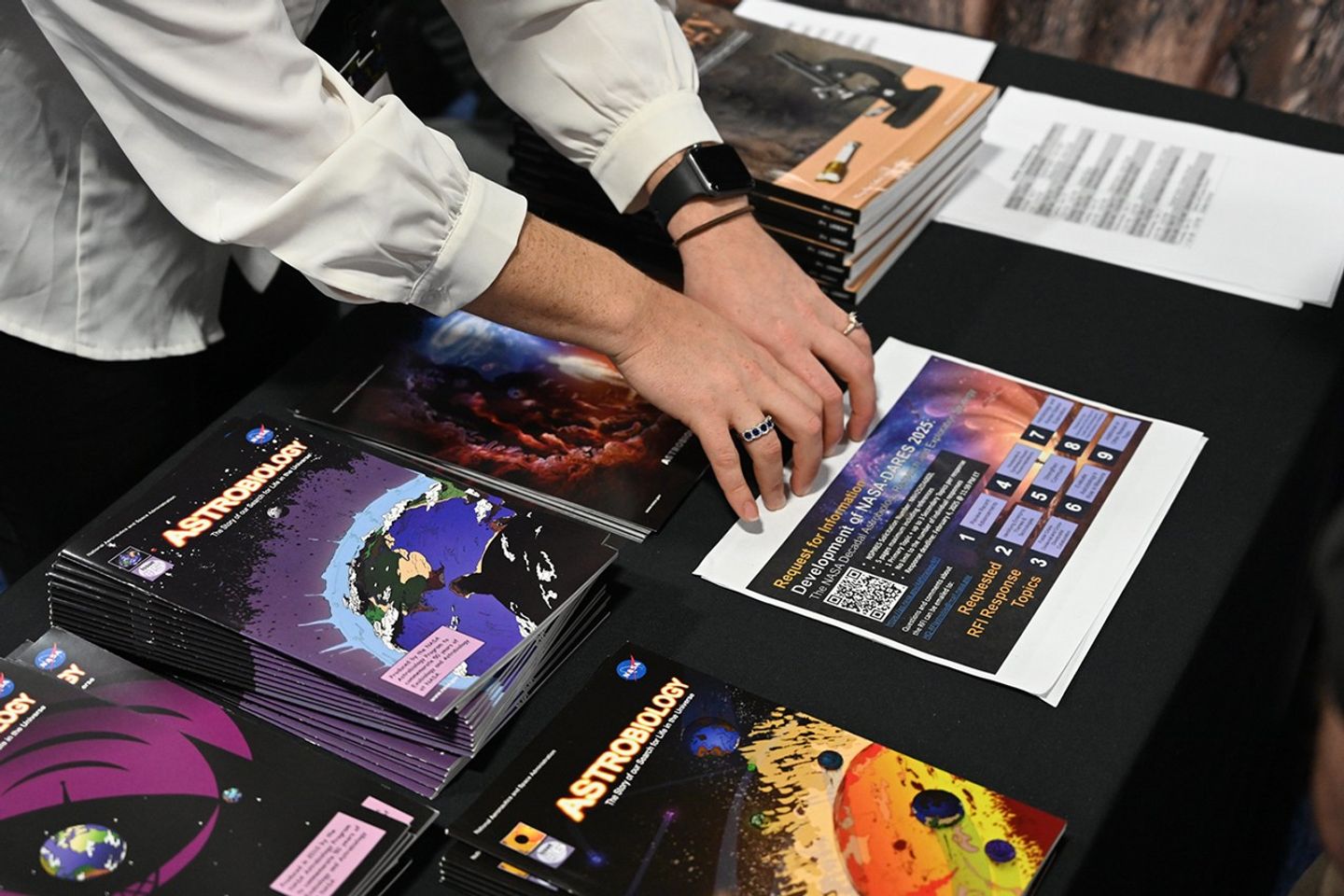
Photo 14. Staff from NASA’s astrobiology program share a collection of graphic novels produced by graphic artist Aaron Gronstal, highlighting the research that the program conducts to answer important questions about the origin, evolution, and distribution of life in the universe.
Photo credit: NASA

Photo 15. Exhibit staff and AGU attendees interact with three-dimensional (3D) models of NASA spacecraft and technology in augmented reality.
Photo credit: NASA
AGU attendees met with project scientists and experts at a new exhibit, called “Ask Me Anything.” The discussions spanned a variety of NASA missions, including Mars Sample Return, James Webb Space Telescope, and Parker Solar Probe, with specialists from these and other missions who spoke during the sessions – see Photo 16. An installation of NASA’s Earth Information Center also made an appearance at AGU24, providing attendees with additional opportunities to speak with Earth scientists and learn more about NASA research – see Photo 17.

Photo 16. NASA Heliophysicists discuss solar science with AGU attendees at the “Ask Me About Heliophysics” table.
Photo credit: NASA

Photo 17. At the Earth Information Center, attendees spoke with NASA staff about the various ways that NASA keeps tabs on the health of Earth’s atmosphere, oceans, and landmasses from space.
Photo credit: NASA

2024 SMD Strategic Content and Integration Meeting
As they have done for many years now, staff and leadership from NASA’s Science Mission Directorate (SMD) Engagement Branch convened in Washington, DC on December 8 (the day before the Fall AGU meeting began) to discuss agency communications and outreach priorities. This annual meeting provided personnel from each of SMD’s scientific divisions a valuable opportunity to highlight productive strategies and initiatives from the previous calendar year and chart a path for the year ahead. During the single-day event, team leaders shared information related to NASA’s web-modernization efforts, digital outreach strategies, and exhibit presence. Approximately 150 in-person and 50 online NASA staff joined the hybrid meeting.
After a welcome from Steve Graham [GSFC/GST—NASA Science Support Office Task Leader], who covered meeting logistics, the participants heard from NASA Headquarters’ SMD Engagement and Communication representatives throughout the day.
Amy Kaminski [Engagement Branch Chief], who recently replaced Kristen Erickson in this role, used this opportunity to more formally introduce herself to those who might not know her and share her visions for engagement. Karen Fox [Senior Science Communications Official] discussed the evolution of communication for SMD missions over the past decade – moving from siloed communications a decade ago that very much focused on “my mission,” to a much more cooperation between missions and focus on thematic communications. Following up on Kaminski’s remarks that gave an overall vision for engagement, and Fox’s remarks about how having a vision will help streamline our messaging, Alex Lockwood [Strategic Messaging and Engagement Lead] delved into the nuts and bolts of strategic planning, with focus on the use of work packages and memorandums of understanding for promoting upcoming missions.
After the leadership set the tone for the meeting, Emily Furfaro [NASA Science Digital Manager] gave a rapid tour of many of NASA’s digital assets intended to give participants an idea of the vast resources available for use. Diana Logreira [NASA Science Public Web Manager] then laid out some principles to be followed in developing unified vision for the NASA Science public web experience.
In the afternoon, there were individual breakout sessions for the Earth Science, Planetary Science, and Heliophysics divisions. These sub-meetings were led by Ellen Gray, Erin Mahoney, and Deb Hernandez, Engagement Leads for Earth Science, Heliophysics, and Planetary Sciences respectively. These breakout sessions afforded participants with an opportunity to focus on ideas and goals specific to their own divisions for 2025. In the Earth Science breakout session, participants heard from other several other speakers who discussed the beats, or content focus areas, that had been chosen for Earth Science Communications in 2024 – including oceans and Earth Action (formerly known as Applied Sciences) – and those that have been identified for 2025: technology, land science, and continued focus on Earth Action.







After participants reconvened from the breakouts, Nicola Fox [Associate Administrator, Science Mission Directorate] gave a mid-afternoon presentation in which she presented her perspective on integrated NASA science, which led into a one-hour “Ask Us” panel with Division Directors to conclude the meeting. Participants included: Mark Clampin [Astrophysics], Lisa Carnell [Biological], Julie Robinson [Earth Science, Deputy], Joe Westlake [Heliophysics], John Gagosian [Joint Agency Satellite], Charles Webb [Planetary Science, Acting].
Based on this meeting, and other communications guidance from NASA HQ, a few general SMD/Earth Science content and engagement priorities for 2025 have emerged. They include:
- continuing to develop stories and products related to the three primary beats for 2025: technology, land, and Earth action;
- emphasizing the value of SMD science as a whole or system of connected divisions, promoting cross-divisional science;
- increasing the use of social media as a vehicle to share NASA missions and programs with diverse audiences;
- focusing on critical – and high-profile – ongoing missions [e.g., Parker Solar Probe, Europa Clipper, Plankton Aerosols, Cloud and ocean Ecosystem (PACE)] and upcoming launches [ARTEMIS and NASA–Indian Space Research Organisation (ISRO) Synthetic Aperture Radar (NISAR)];
- fostering collaborations and partnerships with agencies and institutions, e.g. instillation of the Earth Information Center at the Smithsonian Museum of Natural History; and
- improving the visitor and guest experience at NASA centers, including Kennedy Space Center launches.

Conclusion
The NASA exhibit is an important component of the agency’s presence at AGU, and NASA leverages its large cohort of scientists who participate in the exchange of information and ideas outside of the exhibit hall – in plenary meetings, workshops, poster sessions, panels, and informal discussions. AGU sessions and events that featured NASA resources, scientists, and program directors included the Living with a Star Town Hall, NASA’s Early Career Research Program, NASA’s Sea Level Change Team: Turning Research into Action, and many more. Click here for the complete list of NASA-related events at AGU24.
As the final event in a busy calendar of annual scientific conferences, AGU is often an opportunity for NASA scientists to publish findings from the previous year and set goals for the year ahead. Just as they did in 2024, the agency’s robust portfolio of missions and programs will continue to set new records, such as NASA’s Parker Solar Probe pass of the Sun, and conduct fundamental research in the fields of Earth and space science.
The 2025 AGU annual meeting will be held at the New Orleans Ernest N. Morial Convention Center, in New Orleans, LA, from December 15–19, 2025. See you there.





